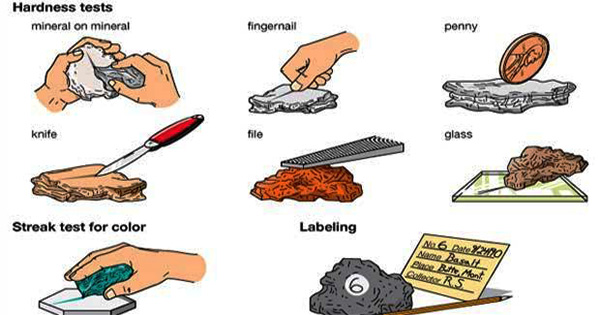Different types of tests for stone and rock

Different types of lab and field tests exist for building stones or rocks. These tests are usually carried on for analyzing the physical superiority of stone materials which are applied in the construction projects. Other tests like Acid test are accomplished for ascertaining the chemical quality of building material or stones. Given below, the details of the most recognized tests for building stone & rock:-
1. Hardness test
- Hardness is the endurance of a stone against indentation, rebound or scratch.
- The test is done with a pen knife by applying Moh’s scale of hardness.
- Hardness test is also performed with Dorry’s testing machine.
2. Crushing test
- Three cube samples having equivalent sizes are cut and arranged in water for 72 hours.
- The test is done through crushing test machine with loading capacity of 13.7 N/mm2 per minute.
3. Transverse strength test
- A sample of the stone, the length of which is ten times higher as compared to its depth is arranged on wedge-shaped supports adjacent to its ends. A vertical load provided at the centre is raised bit by bit unless the failure takes place. The transverse strength, known as the modulus of rupture, in MPa is calculated with the following formula.
Where,
W denotes breaking load assigned at the centre in N,
L denotes distance among the supports in mm,
b denotes width of the specimen block in mm and
d denotes depth of the specimen block in mm
- Transverse strength tests are generally performed on specimens of 25mm square in section. The estimated values for ordinary stone are: Granite 10 – 17.5 MPa; limestone 3.5 – 20 MPa and sandstones in the range 4 – 15 MPa.
4. Impact test
- For toughness
- A steel hammer with 20 N is permitted to drop axially in the specimen.
- The blow at which the specimen is disrupted and the durability of the stone is characterized.
5. Fire resistance test
- The stone that does not contain calcium carbonate can withstand fire.
- Existence of calcium carbonate is identified with few drops of dilute sulphuric acid that can generate bubbles.
To read the complete article, go through the following link
www.civileblog.com

